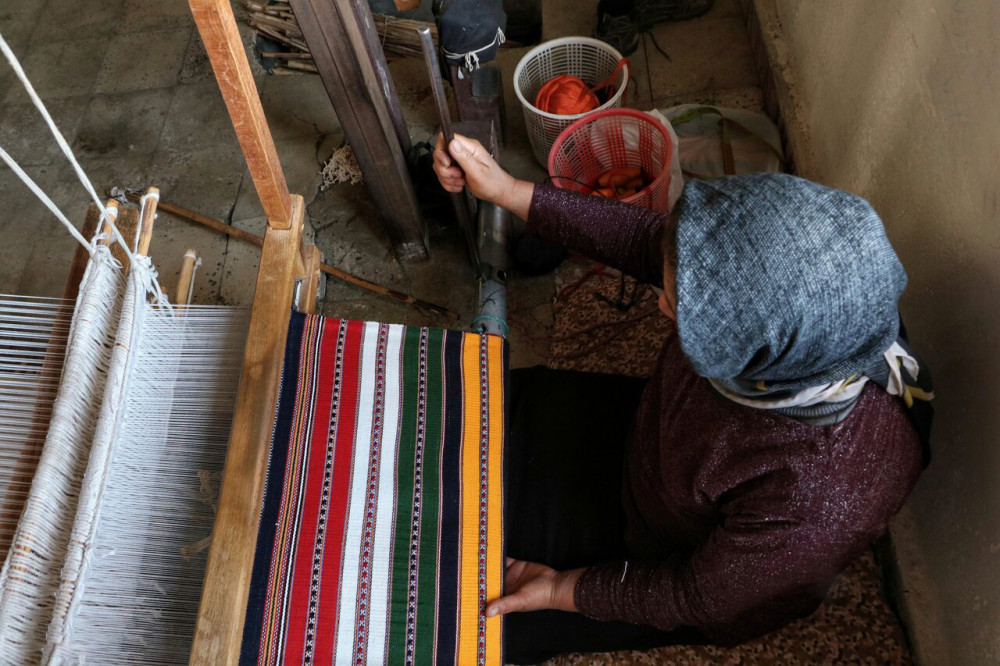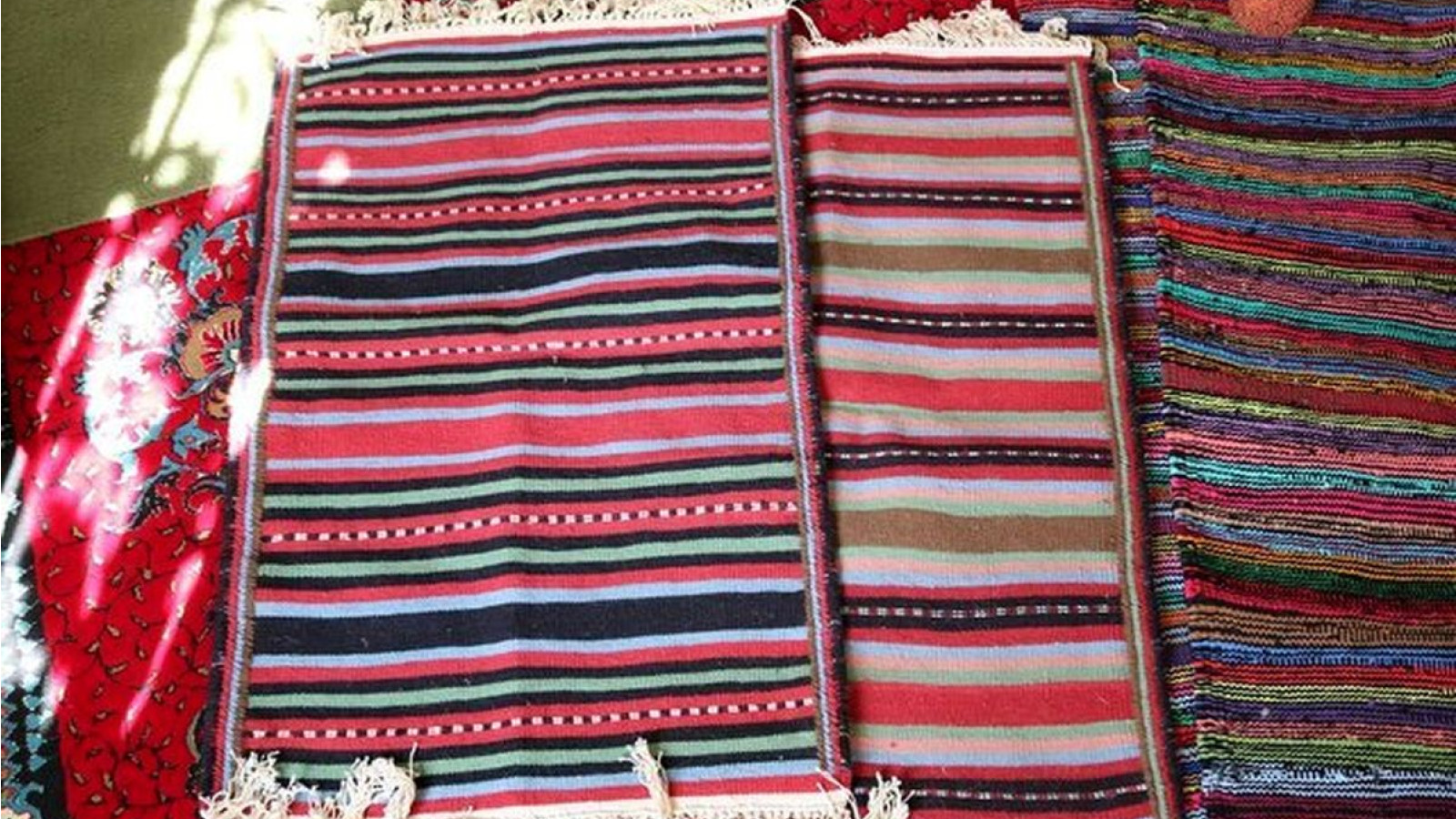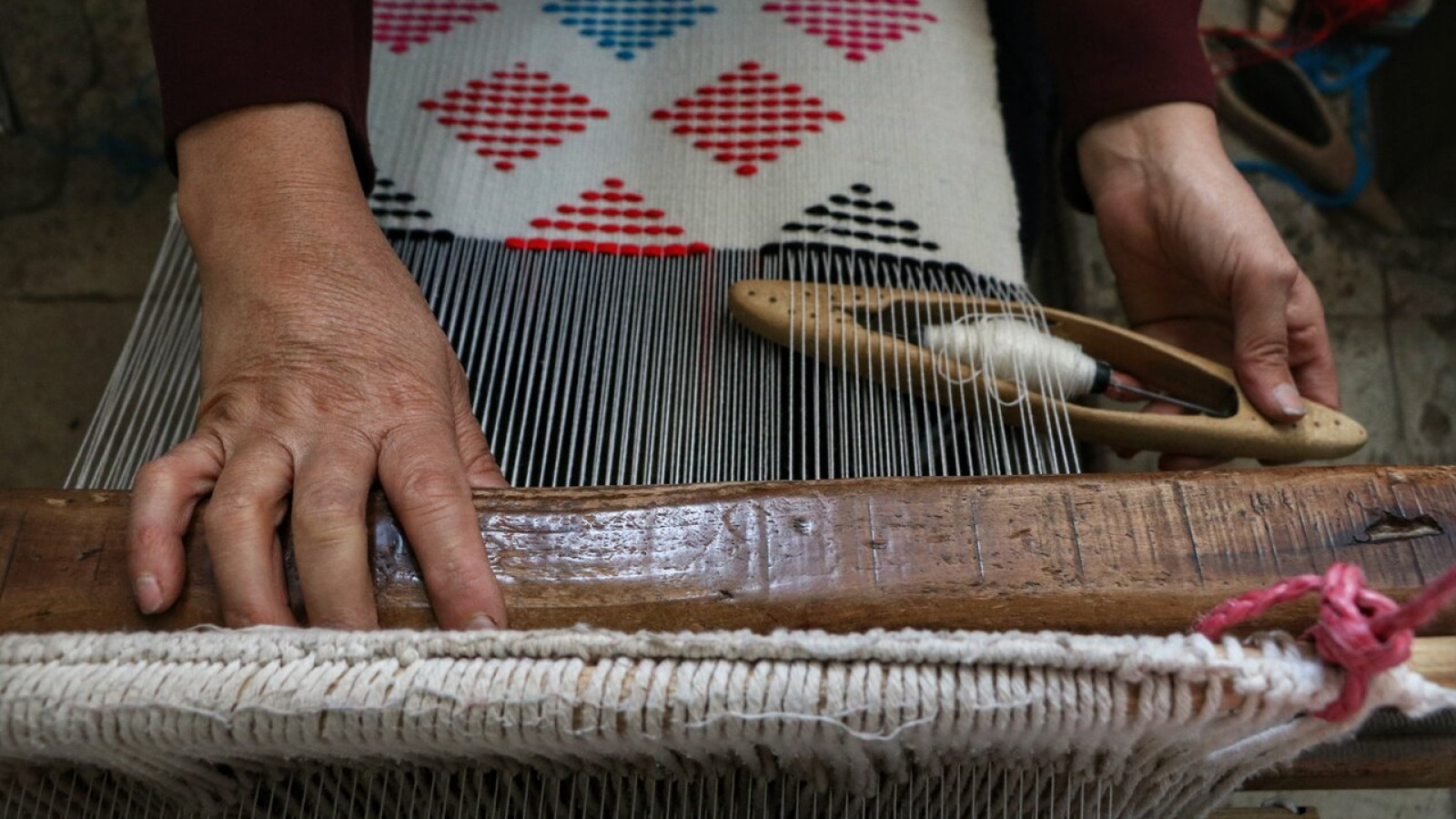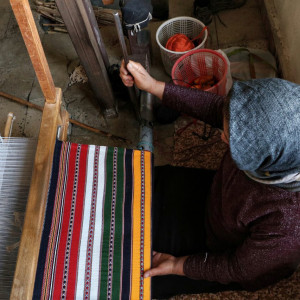
Pelas Bafi of North Khorasan
Pelas is a kind of wool Kelim and from a long time ago, has been used as a floor covering as a protection against humidity, cold and heat of the ground. These weaves cover the floorings of village houses or the tents of nomadic people of North Khorasan who usually inhabit damp environments. They are also used as prayer rugs and bridal tablecloths.
The background of Pelas is usually horizontal and colorful strips. Pelas and Jajims are similar in design and motifs. But the strips of Jajims are vertical whereas in the Pelas they are horizontal. Pelas are weaved in other cities of Iran, too. but in North Khorasan, they are weaved by Pichbafi technique. No special kind of knot is used to make a Pelas and the patterns are created by passing the colorful wefts through the wraps. To add to the stability of the weave, the wefts are passed from both front and behind of the wraps. That is why the patterns of Pelas look embossed.
The nomads weave their products on horizontal looms and use the wool of their own sheep to produce the yarns. Following this rule, the women spin the wrap and weft yarn, dye them and make Pelas, rugs and other weaves. They choose the loom depending on the height and width of the product and stretch the yarns directly on the looms. The stretching is done in Persian or “Zarb Dari” (cross) style. After the stretching is finished, clay or paste (a mixture of flour and water) is applied the top and under of the loom. This prevents the loosening of the wraps in case one of them is cut. Before the weaving, the process of “Ghaymah” or “Ghaymeh” which is the same as “Zanjireh Bafi” is practiced. This is done to tighten and adjust the wraps. After that, a simple Kilim called “Tapragh” or “Tafragh” is weaved in about five centimeters to tighten the work even further. A kind of colorful thread called “Alaja” or “Sachbaghi” is passed through the Tapragh as a decoration. This is the same as filigree that is used in Keilims, too. After this, the Pelas is weaved according to the prepared design.


